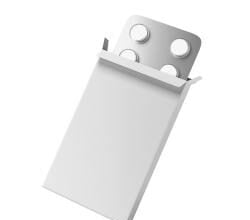By Robert M. Rowley, MD
By Robert M. Rowley, MD
We are at the threshold of a new way of paying for healthcare. We have paid for it traditionally with fee-for-service, a legacy that goes back to the beginning of third-party payments for healthcare (insurance) in the early and mid-1900s. What has emerged has been a detailed quantification of every piece of health service, using Current Procedural Terminology (CPT codes), each of which has been assigned a specific point value (the Resource Based Relative Value System, or RBRVS). The relative value units (RVUs) associated with each CPT is multiplied by a dollar multiplier (Medicare sets this annually, and most private health plans follow suit) to result in a dollar amount that is paid for each piece of service.
The system has byzantine complexity, and those of us who live in this environment can easily become focused on the minutiae, perhaps losing sight of the bigger picture. We come to focus on whether a given CPT’s RVU value is “fair,” or whether a certain new code is to be covered or not. What can get lost is the underlying question of whether fee-for-service is really the best way to deliver healthcare.
This is now changing, at least from a policy perspective. By paying for volume, fee-for-service has resulted in cost escalation far in excess of the growth of the overall economy of the country. And for all that extra cost, we don’t have better outcomes than those in countries that spend half what we do.
Medicare (CMS – the Centers for Medicare and Medicaid Services) has proposed moving towards value-based compensation over the next few years. And a consortium of stakeholders, including large private payers, have put out an Alternative Payment Model (APM) White Paper. This has been reviewed nicely in a Health Affairs Blog article, “Paying Providers for Value: The Path Forward.”
The changes will be profound, and will certainly evolve over time. Of course there will be missteps. There will be experiments, with successes and failures.
Do we have the right tools?
Just about every tool we use in healthcare grew up in a fee-for-service environment. Electronic Health Record (EHR) systems used by clinicians and hospitals are centered around creating documentation, maximizing “code capture,” and generating bills that are sent to payers. Even in health systems that don’t create billing to a fee-for-service payer (like the VA clinic system), the tools are still the same.
So what if all of that changes? Imagine a setting where clinician groups are paid differently – such as a global risk-adjusted monthly fee, with an add-on for successful performance on value measures. In such a setting, in-office visits are no longer a “profit center” that needs to be maximized because that is the only way to get paid. Instead, novel, more efficient, and less burdensome ways of interacting with one’s population of patients, such as the use of telemedicine and other e-visits, phone visits, etc., would be encouraged.
In a value-based environment, the things that are important are (1) individual person-based care, with wide-open avenues for a patient to be involved, should she/he want to; (2) risk stratification in order to know who needs active outreach; and (3) measurement against quality metrics (HEDIS measures, access to care, and customer satisfaction/experience). It is very difficult to do this in an isolated, small practice. A team approach is needed in order to support hiring staff to do the things that must be done: nurse outreach personnel and case managers, data analysts to identify quality measure performance, chronic care management coordinators, virtual care teams (nurses, dieticians, pharmacists and social workers), and so forth.
The team approach can be implemented in a centralized clinic, or in organized networks that connect individual practices in the community together into virtual teams. This was underscored nicely in an article in the Annals of Family Medicine, “The paradox of size: how small, independent practices can thrive in value-based care.”
The tools we have won’t get us there. They were built in a transactional environment and create data that is provider-centric and siloed in the institutions that create it. This will not do for value-based care.
What we need is a universal sharing platform.
We need a new generation of software that will enable the new way of organizing and delivering care. We need a centralized patient-centered record that collects and combines health data from all sources – doctor’s offices, hospitals, telemedicine and other e-visits, secure email-like communication, patient-entered information, device-originated data – in short, all data that is known about a patient needs to be centralized and normalized.
This shared platform is the base for all the next-generation tools that will be needed: clinician documentation and workflow tools (the EHRs of the future); patient-facing tools that capture information between visits or at check-in; shared care plans augmented by Artificial Intelligence; quality performance tools based on various measures; and population risk stratification tools to enable active care-management outreach.
It is possible that current EHRs in the market can adapt to this new environment. The risk is that they won’t do a very good job, and such functions will simply be bolt-on technology that contributes to “feature bloat” and deteriorating usability. However, the vast investment that institutions (especially large institutions) have in legacy systems will make rapid change difficult – it will be incremental. But the new environment will demand it.
We have seen what will be needed in the next few years, as we change to value-based compensation and realize just how profound this change is. That is why we built Flow Health – to create the universal sharing platform that can be the Operating System for Value Based Care.








